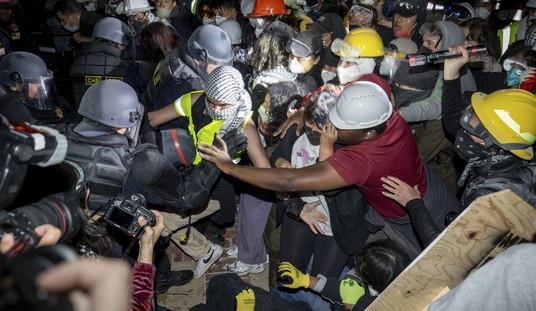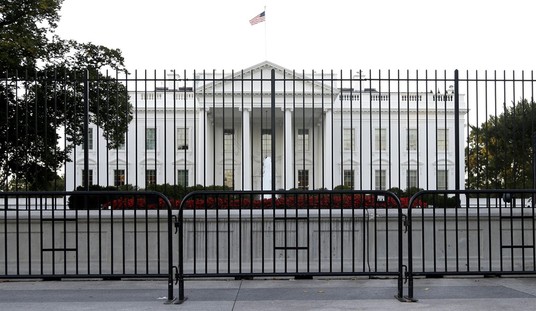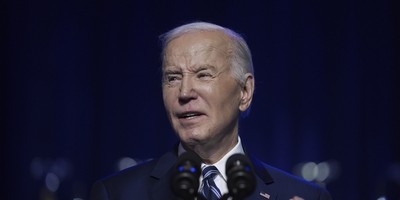In the April issue of Townhall Magazine, where this article originally appeared, Brian McNicoll explains how clean energy is anything but clean.
Robert F. Kennedy Jr. helps run Riverkeeper Alliance, serves as a senior attorney for the Natural Resources Defense Council, and has been named one of Time magazine’s “Heroes For The Planet.”
But his real job, of course, is to be a Kennedy.
That means a messy personal life (a divorce and two drug busts) and that accompanying sense that the rules that apply to others do not apply to himself.
Take, for example, his views on energy. They are fairly boilerplate given his background. Oil companies are bad, fierce, controlling, greedy, and manipulative. They pollute with impunity and exploit with immunity and they use their enormous checkbooks, bolstered by government subsidies and rapacious profits, to coerce cash-starved congressmen into doing their bidding.
Renewables are, of course, good. Particularly wind energy. RFK Jr. brags that he has been involved in advancing the technology, even helping with the siting of some projects.
But that doesn’t mean he supports every wind project. In fact, the project with which he is most closely identified does not enjoy his support at all.
Not in this Kennedy's Backyard
The Cape Wind project would be the first domestic offshore wind farm in the United States. It would operate in Cape Cod Sound, with 130 turbines about six miles off the Massachusetts coast. That’s a little too close to ... you guessed it ... the Kennedy compound for RFK Jr.’s liking.
So, in 2005, he wrote an op-ed piece, dutifully printed by The New York Times, in which he outlined his objections.
Those turbines six miles out would damage the view from the shore, he wrote, even though they would barely be visible over the horizon, and then only on the clearest of days.
Their noise, he claimed, would drown out the sea crashing into the dunes on Cape Cod. The twinkling red lights above them to warn aircraft would constitute unacceptable light pollution. Seriously.
But many of Kennedy’s objections would apply to any wind project.
He says energy from the wind farm would cost twice as much as that from fossil fuels, and the project would not be viable if not for extensive federal subsidies. He says thousands of birds, many of them from protected species, would be killed in the turbines. All true.
Recommended
He says offshore wind costs more than onshore wind. Indeed, it’s nearly three times as expensive. But he then curiously argues it would be more eco- nomical to put the turbines 12 or even 27 miles offshore.
He says the chemicals that make the turbines turn pose a threat in their own right. Correct again.
His case is what it is, a mishmash of hope, experience, and self-serving arguments. But it’s downright jarring to hear all this from a genuine official “Hero For The Planet.”
Subsidies for Nothing
But it’s not just Kennedy or Cape Wind. There is something about renewables in general, but wind power in particular, that makes people do and say and support crazy things. It inspires a public and private “logic” that is costly and impractical and hypocritical, all in the name, supposedly, of making the Earth a cleaner place.
For instance, all renewable energy sources are subsidized; they would not survive otherwise. But none are as de- pendent on government largesse as wind.
It can barely construct a turbine without government money.
From 2009 to 2012, when the Wind Production Tax Credit was in full force and a program under the American Recovery and Reinvestment Act was dispensing handsome cash incentives to companies to build wind farms, wind power added 30,000 megawatt hours, more than doubling U.S. capacity. In 2013, with the cash program dead and the PTC on the way out, it grew all of 1.6 megawatts.
By making marginal projects viable and projects planned for later urgent, the ARRA program “changed the economics of the industry overnight,” said Lisa Linowes, an expert on the impacts of industrial-scale wind energy development. “The industry’s project pipeline was emptied by the end of 2012, and it could take several years before additional proposals reach the shovel-ready stage.”
And although other renewables have found their own niches, think single-family solar panels in Arizona, wind has gained market share almost solely by government force.
Big Wind preys on the 30 states with laws that require certain percentages of their electric power be derived from renewable sources and the six where these so-called Renewable Portfolio Standards are “voluntary.” Rate payers in tiny New Hampshire spend $30 million per year to comply. Other states spend far more.
Utilities are forced to enter into long- term contracts with wind providers to assure they can meet the mandates. Wind advocates say these contracts lock in lower prices. What they lock in is dependable income for wind companies. “It’s $60 per megawatt hour for a product that is worth nothing most of the time,” Linowes said. Nothing? Yes, nothing.
A Burden On Other Power Sources
The industry then uses subsidies that can add up to more than $100/kilowatt hour and predatory pricing practices that would not be tolerated from any other industry to drive down the prices of its competitors.
Grid operators send a price signal of what they are willing to pay at that point for power. These can range from $100/ kwhr during peak demand on a hot summer day to $10/kwhr at night, when it’s cooler, offices are unoccupied, and most people are asleep.
Bolstered by their subsidies, their mandates and $60/megawatt hour deals with utilities, wind operators, who have the most product on hand to sell at night because that is when the wind blows, bid $0 or even a negative number. Nuclear power plant operators are forced to match this because it’s cheaper to sell the power at a loss than to shut down and power back up their reactors. Coal, natural gas, and heating oil plants can either match at a loss or forego sales.
“It’s dumping energy on the market like China used to dump steel,” said Linowes.
And it can do this only because of its near-stranglehold on federal subsidy dollars.
The wind industry consumes nearly 80 percent of all federal subsidy dollars for renewable energy and 55 percent of all federal energy subsidies, according to David Brown, senior vice president for government affairs for Exelon, a nuclear power company. Because wind farms almost always are located far from where the energy will be used, power companies must construct huge transmission lines to take in this additional capacity they do not need. And since wind performs worst when it’s needed most, those traditional power companies it does so much to undermine must stand ready to make up for the needs it cannot meet.
A Failed Experiment
In 2012, a series of 100-degree days in Chicago put the area’s grid to the test. At one point, the power companies of the area were producing an incredible 22,000 megawatt hours of power. Wind, which generally produces less than 10 percent of its capacity during peak demand times, produced just 0.2 percent during this particular heat wave. “A 99.8 percent failure rate,” Brown deadpanned.
And there are consequences. The rules that encourage wind production make nuclear impractical, Brown said. As a result, his firm is considering closing three reactors, two in Quad Cities, Illinois, and another in Clinton, Illinois, both near the Mississippi River, beyond which lies Iowa, a leading producer of wind energy.
“You’re taking a lot of predictable, reliable capacity off line,” Brown said. “All so wind can have a bigger piece of a stagnant pie. Between the subsidies, the negative pricing, and other costs we’re forced to absorb, it’s becoming impossible to compete.”
No Choice For Consumers
On top of the financing to build and the subsidies to operate, government conscripts wind’s customers for it as if they were so many Vietnam-era draftees. Not only do most states require power companies derive some percentage of their output from renewable sources, many also require power providers to purchase any excess capacity generated by wind power.
“You have to add wind power whether you need it or not,” said Mark Glaess, executive director of the Minnesota Rural Electric Association, which represents 50 small rural electric co-ops. “Right now, we’re paying for wind we don’t need, we can’t use and can’t sell.” And rate-payers are bearing the burden to the tune of $70 million in 2011 for MREA’s 625,000 business and residential customers.
And it’s not just the raw dollars. It’s the way they are obtained. Most federal subsidies arrive through the Investment Tax Credit and the Production Tax Credit, which has been allowed to expire, at least for now, by Congress, although it will continue to pay existing projects for 10 years. Together, they cost $12.2 billion in 2012.
The ITC, which dates to 1978, provides a 30 percent tax credit for wind, solar, and fuel cells and less for other types. As recently as 2010, these tax credits cost the U.S. Treasury less than $100 million. Even today, they amount to only about $500 million per year, approximately 90 percent of which goes to solar.
In 1992, Big Wind decided it needed its own tax credit, or at least one it could control, and the PTC was born. The PTC costs taxpayers five times as much as the ITC, and three-fourths of the money, about $2.3 billion per year, goes to wind. Its share of that ARRA program was 68 percent.
And the special dispensations don’t stop there.
Bird Killing Machines
Oil and electric companies have been fined as much as $100,000 when birds of protected species were drowned in oil waste pits or electrocuted on power lines. But the Obama administration has yet to fine a wind company for birds killed in turbines, even those, according to The Washington Post, who have violated the law repeatedly.
“What it boils down to is this: If you electrocute an eagle, that is bad, but if you chop it to pieces, that is OK,” Tim Eicher, a former U.S. Fish and Wildlife Service enforcement official, told the Post.
And this bird-killing is no minor problem. Nearly 50 golden eagles have been killed since 2009 at just one small wind farm in remote Wyoming. Raptors, condors, of which there are fewer than 300 on Earth, and eagles of all kinds are in danger throughout the West.
Experts say the industry’s response is to serially and seriously understate the problem. Jim Weigand, who studies avian mortality from wind energy, says turbines kill as many as 39 million birds per year and the industry hides 90 percent of the problem.
In the name of safety, he says, it builds bigger and bigger turbines with larger rotor sweep and faster blade tip speeds, which means more birds will die in wind turbines and those that do will be flung considerably farther to their deaths. Then, the industry gets government to decrease the size of the areas around wind farms that are searched for bird bodies. This means more deaths for birds but fewer dead birds found and thus less accountability for wind producers.
This is a pattern with the wind industry. Mete out consequences for others, but avoid scrutiny by pushing the environmental line. Wind’s output has in- creased from 6 billion kilowatt hours in 2000 to 140 billion in 2012, but it still accounted for just 3 percent of total U.S. electricity generation. And President Obama was right about wind entrepre- neurs. They truly didn’t build that.
A Toxic Mess
It wasn’t just American taxpayers who picked up the tab. The American wind industry was built on the backs of the people of Baotou, China, too. There, a series of government-operated plants process the rare earth metals used to produce neodymium, which is used to make the powerful magnets in wind turbines. In an area where waves of wheat and corn used to thrive now sits an “immense lake of bubbling toxic waste covered in black dust,” according to the Daily Mail of London.
The lake, a dumping ground for 7 million tons per year of radioactive mined rare earth after it has been doused in acid and chemicals and processed through red-hot furnaces to extract its compo- nents, actually hisses like a cauldron in a creepy old movie. Just a few minutes of exposure to the lake will cause eyes to water and a powerful, acrid stench to fill the lungs, according to the Mail.
Those who live near the lake report their teeth fall out and their hair turns white at unusually young ages. They suffer more from severe skin and respiratory diseases. Children are born with soft bones, and cancer rates have skyrocketed. The lake’s radiation levels are 10 times that of the surrounding countryside. Nothing will grow for miles around. Residents wear hospital masks wherever they go.
Even the Chinese government has become alarmed and begun to study the problem, although it won’t share its findings or even acknowledge the risk.
“There’s not one step of the rare earth mining process that is not disastrous for the environment,” Jamie Choi, an expert on toxics for Greenpeace China, told the Mail. “Ores are being extracted by pump- ing acid into the ground, and they are processed using more acid and chemicals.”
Because of the expansion of wind power, China no longer provides enough of this substance. New sources are being sought, including one location in Colorado. That could set up an interesting battle, Big Wind v. the environmental movement, and many Americans will re- alize for the first time those two are not on the same team.
If It Feels Good Do It
Linowes, however, doubts wind will lose. “The public has long been predisposed to see wind as a good thing and folks like me who mention the darker side are either misinformed or paid by the fossil fuel industry to stop wind from stealing market share,” she said.
“The wind guys were first in the room pushing for state mandates, so it’s not an accident wind is a primary resource for meeting the mandates. They also convinced legislators that wind was the only renewable that could scale up to large quantities. It’s not unusual to see a 100- plus megawatt-hour wind project, but the largest biomass facility capped at just 50 megawatts and solar at sub-10 megawatts.
“Most legislators do not stop to think that wind could only produce, at best, 30 percent of the installed amount, and most of that arrived at night when it was least needed. What mattered was they were building thousands of megawatts of renewables.
“And that felt good.” •
























Join the conversation as a VIP Member